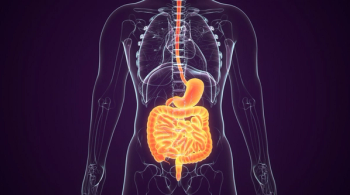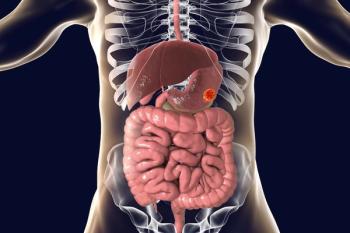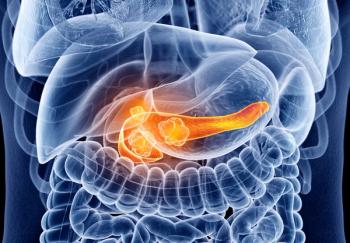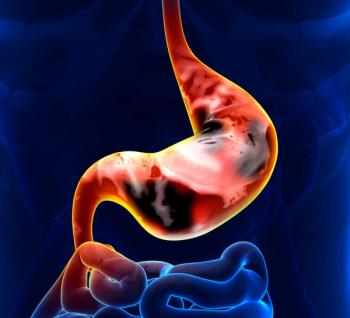
VEGF-D May Serve as Predictive Biomarker of Ramucirumab Efficacy in Metastatic CRC
Patients with metastatic colorectal cancer and high expression of VEGF-D garner more benefit from the VEGFR-2 antibody ramucirumab than those with low VEGF-D expression, according to a new study.
Patients with metastatic colorectal cancer (mCRC) and high expression of VEGF-D garner more benefit from the VEGFR-2 antibody ramucirumab than those with low VEGF-D expression, according to a new study.
“The poor prognosis of mCRC drives ongoing efforts to find treatments that improve patients’ outcomes,” wrote study authors led by Josep Tabernero, MD, PhD, of Vall d’Hebron University Hospital in Barcelona. The phase III RAISE trial found that ramucirumab in combination with a FOLFIRI regimen (5-fluorouracil, leucovorin, and irinotecan) improved over placebo plus FOLFIRI as second-line treatment in this setting; it included a planned biomarker analysis to help determine which patients may benefit most from this therapy.
The trial included 1,072 patients, and biomarker results were available for 894 of them. Those patients were randomized to an exploratory subset and a confirmatory subset, and were analyzed for levels of VEGF-C, VEGF-D, sVEGFR-1, sVEGFR-2, sVEGFR-3 [plasma], and VEGFR-2 [tumor tissue]. Results were
“At the initial plasma [exploratory] analyses, VEGF-D showed a strong signal associating higher levels with greater improvement in overall survival and progression-free survival in the ramucirumab arm,” the authors wrote. A VEGF-D level of 115 pg/mL was specified as a cutoff value for high and low subgroups, and the confirmatory subset of patients found this level was useful to predict efficacy.
In the full population including both cohorts, high VEGF-D levels were seen in 61% of patients. The high-VEGF-D group had a median overall survival of 13.9 months with ramucirumab and a median overall survival of 11.5 months with placebo. The progression-free survival with ramucirumab was 6 months, compared with 4.2 months with placebo.
In low–VEGF-D patients, meanwhile, the ramucirumab patients had a median overall survival of 12.6 months, and the placebo patients had a median overall survival of 13.1 months. Progression-free survival was 5.4 months with the study drug, compared with 5.6 months with placebo. Interaction analyses using the 115 pg/mL cutoff were significant for overall survival (P = .0005) and progression-free survival (P < .0001). None of the other potential biomarkers were found to be predictive of outcome.
“Higher levels of VEGF-D expression are a potential predictive biomarker for ramucirumab efficacy,” the authors concluded. They noted that the angiogenic mechanisms associated with the malignancy and the drug make this association biologically plausible, and that an assay appropriate for use in a clinical setting is now under development. “If successful, this assay will be used to confirm the relationship observed in the RAISE samples.”
Newsletter
Stay up to date on recent advances in the multidisciplinary approach to cancer.





















































































